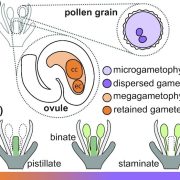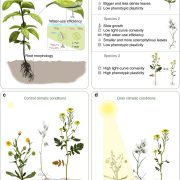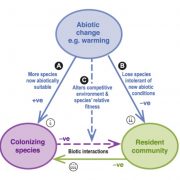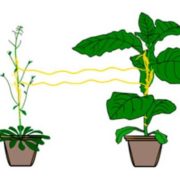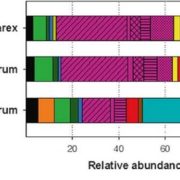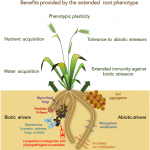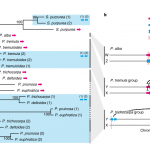Plant dispersal strategies of high tropical alpine communities across the Andes (J. Ecol.)
 Since dispersal is crucial for the assembly of plant communities, a better understanding of its relation to climate is needed to predict plant communities’ responses to changes in the environment. However, this kind of association is still missing in tropical alpine ecosystems –one of the most vulnerable to climate change. In this paper, Tovar et al. evaluated the correlation between the dispersal strategies (i.e., the combination of seed dispersal mode and growth form) of 49 summits across the Andes with climatic variables. Also, they assessed how the dispersal strategies were associated with species phylogeny. The authors found that the minimum air temperature had a stronger correlation with the relative abundance of dispersal strategies than phylogeny. For instance, colder summits had a higher relative abundance of autonomous-dispersed herbs, while animal-dispersed shrubs and trees were the most dominant in warmer sites. Given this, the authors suggest that a warmer climate could allow animal-dispersed and woody species to outcompete species with other dispersal strategies, highlighting a particular risk for some high-Andean species to climate change. However, the authors observe the need for including more dispersal and reproductive traits –such as seed size and plant clonality– to make more robust inferences. Summary by Carlos A. Ordóñez-Parra @caordonezparra) J. Ecol. 10.1111/1365-2745.13416
Since dispersal is crucial for the assembly of plant communities, a better understanding of its relation to climate is needed to predict plant communities’ responses to changes in the environment. However, this kind of association is still missing in tropical alpine ecosystems –one of the most vulnerable to climate change. In this paper, Tovar et al. evaluated the correlation between the dispersal strategies (i.e., the combination of seed dispersal mode and growth form) of 49 summits across the Andes with climatic variables. Also, they assessed how the dispersal strategies were associated with species phylogeny. The authors found that the minimum air temperature had a stronger correlation with the relative abundance of dispersal strategies than phylogeny. For instance, colder summits had a higher relative abundance of autonomous-dispersed herbs, while animal-dispersed shrubs and trees were the most dominant in warmer sites. Given this, the authors suggest that a warmer climate could allow animal-dispersed and woody species to outcompete species with other dispersal strategies, highlighting a particular risk for some high-Andean species to climate change. However, the authors observe the need for including more dispersal and reproductive traits –such as seed size and plant clonality– to make more robust inferences. Summary by Carlos A. Ordóñez-Parra @caordonezparra) J. Ecol. 10.1111/1365-2745.13416


